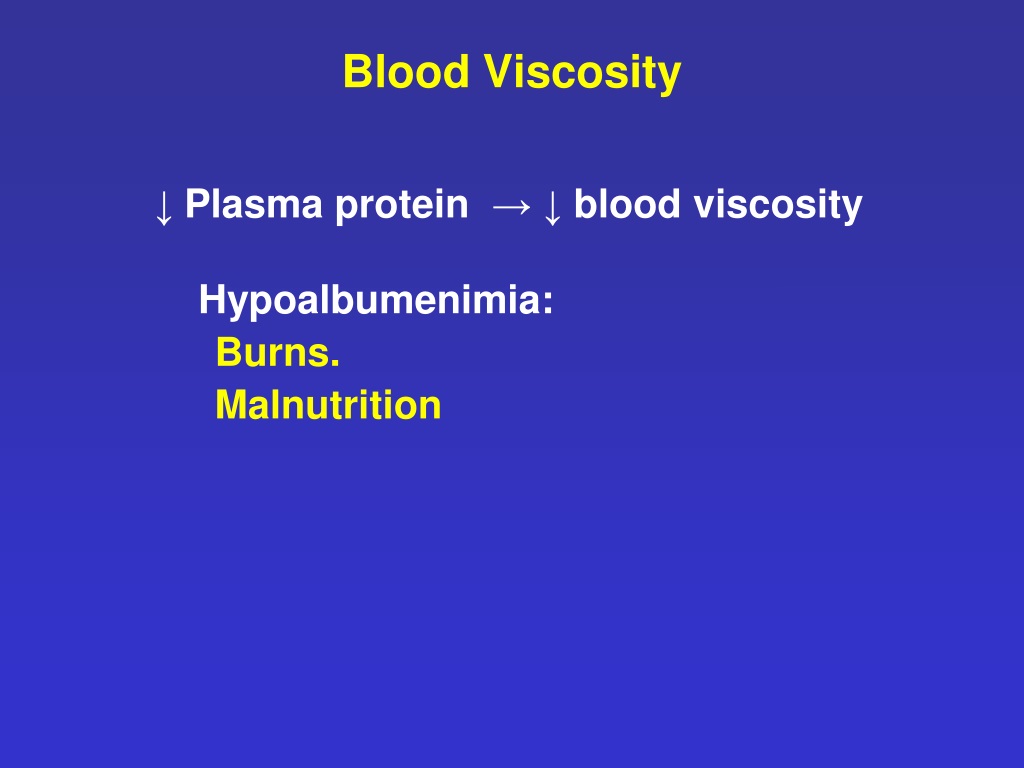

The level of viscosity at which symptoms can initially present is variable from person to person depending on the underlying physiology, but for a given patient, symptoms will typically manifest about the same level of viscosity over time.Ī high degree of clinical suspicion is required based on history and physical exam findings to diagnose HVS. The severity of clinical symptoms is directly related to the increased levels of serum viscosity, with progressively more severe symptoms occurring as the individual patient’s serum viscosity increases. An increase in circulating proteins can also affect platelet aggregation and cause prolonged bleeding time. This increase in viscosity causes sluggish blood flow, relative decreased microvascular circulation, and hypoperfusion of tissues. This includes RBC, WBC, platelets, or serum proteins. An increase in blood viscosity can be caused either by a deformity of the shape of red blood cells (RBCs) which causes RBC aggregation and decreased blood flow or by any pathological elevation of the components of blood. HVS is the pathological condition in which blood is "thicker" than normal and therefore flow is reduced. Viscous fluids are thicker and travel more slowly. When fluid has low viscosity, it travels quickly and without much difficulty. Viscosity is formally defined as the measurement of the internal resistance of a fluid to flow but can simply be thought of as the "thickness" or "stickiness" of a fluid.


 0 kommentar(er)
0 kommentar(er)
